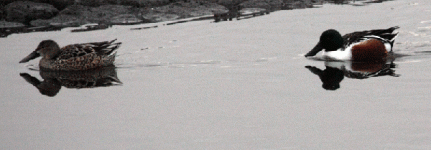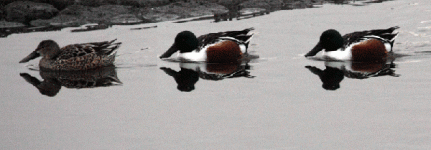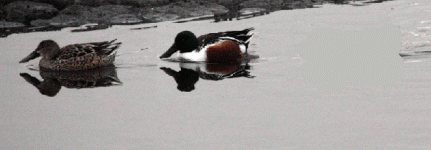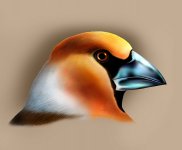colleenc
Well-known member
Photoshop is an amazingly powerful tool for fine artists. But it is a complicated program to learn. On this thread we can hopefully pool our knowledge and help each other. And over time it can be a place for new users to find help. My goal with PS is to do more actual painting than computer work, so I don't spend time doing a lot of learning, I try to use what I have learned and make that work. Over time by accident I find new things, but at least I haven't spent more time on the computer than my painting that way.
On another thread I was asked about layers. Here is the bit I know and some out of a book that I have that is only semi helpful. I've not been able to learn PS from a book very well, a class would be ideal.
"Layers, a Photoshop ( from now on I'm using PS) method for separating image components for easy access and editing. Layers follow the metaphor of clear acetate overlays that can be stacked and rearranged)
lets take a photo of No. Shovelers I see a crop that gives me the general look I want but the birds are not in the right place, I can draw and scan and then copy paste into the comp,( or use a tablet and pen) or I can just "lasso" the bird, or crop it out, select all, copy, and paste it on the original work. It is now on a separate layer that I can move all around until I get the comp I want. to see this, go to the menu at the top and pull down windows and check "layers" my addition is on a separate layer than the original and I can move things around by grabbing the crop and moving it in various places until I'm happy. The crop piece shows in the layers menu on the screen that came up when you checked layers. If I've added several birds each one will be on a different layer, and I have to find the layer it is on to move it, layers are numbered in the window according to the order you added them .....it takes longer to type this than to do it.
I use this for composing my prelim ideas, then I do a sketch from that, I sometimes put the sketch in PS and rework more. You can revert to an earlier version of your work by using the history tool, but I've never used that. In the last version I used the brush tool and sampled the color of the water and painted out the duck. Sometimes I use the clone tool to do this, but sometimes the layer is locked and it won't unlock.
It's agony to explain all this, the best way would be to have a friend who knows the program and watch them do it. Which is how I learned. People who are really good at PS move so fast it's hard to keep up, so that's why a class would be good....or maybe we can find some online tutorials.
On another thread I was asked about layers. Here is the bit I know and some out of a book that I have that is only semi helpful. I've not been able to learn PS from a book very well, a class would be ideal.
"Layers, a Photoshop ( from now on I'm using PS) method for separating image components for easy access and editing. Layers follow the metaphor of clear acetate overlays that can be stacked and rearranged)
lets take a photo of No. Shovelers I see a crop that gives me the general look I want but the birds are not in the right place, I can draw and scan and then copy paste into the comp,( or use a tablet and pen) or I can just "lasso" the bird, or crop it out, select all, copy, and paste it on the original work. It is now on a separate layer that I can move all around until I get the comp I want. to see this, go to the menu at the top and pull down windows and check "layers" my addition is on a separate layer than the original and I can move things around by grabbing the crop and moving it in various places until I'm happy. The crop piece shows in the layers menu on the screen that came up when you checked layers. If I've added several birds each one will be on a different layer, and I have to find the layer it is on to move it, layers are numbered in the window according to the order you added them .....it takes longer to type this than to do it.
I use this for composing my prelim ideas, then I do a sketch from that, I sometimes put the sketch in PS and rework more. You can revert to an earlier version of your work by using the history tool, but I've never used that. In the last version I used the brush tool and sampled the color of the water and painted out the duck. Sometimes I use the clone tool to do this, but sometimes the layer is locked and it won't unlock.
It's agony to explain all this, the best way would be to have a friend who knows the program and watch them do it. Which is how I learned. People who are really good at PS move so fast it's hard to keep up, so that's why a class would be good....or maybe we can find some online tutorials.
Attachments
Last edited:









